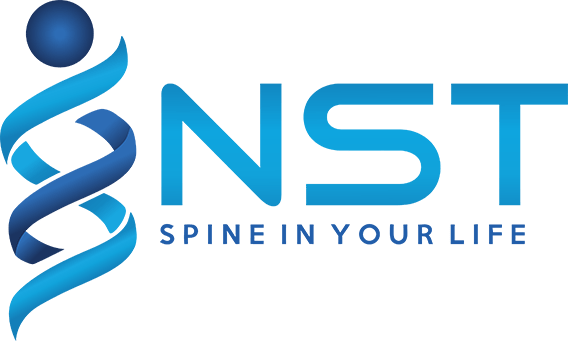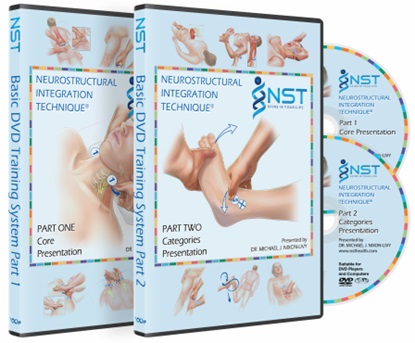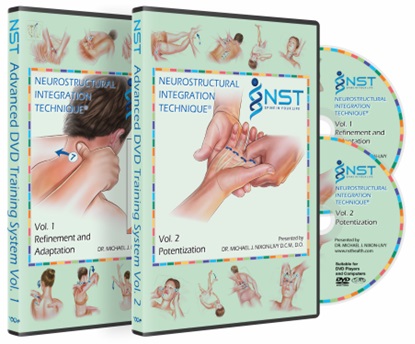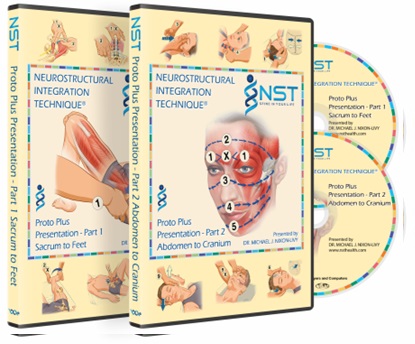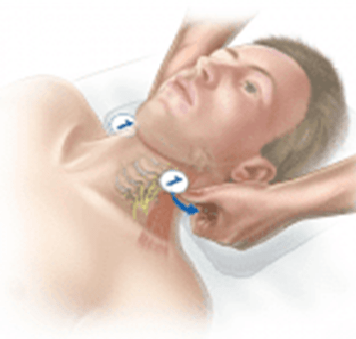Home Study Courses
Home / Home Study Courses
Introduction
The NST Spinal Integration Home Study Courses have been constructed using tried and proven learning strategies, to equip students with the necessary tools to quickly learn and skilfully implement NST Spinal Integration, into professional clinical practice.
There are three levels of NST Home Study courses (please see buttons above) that faithfully follow their counterparts in the live seminars, namely the Osteospinal OS, OS Advanced and Proto Plus Seminars
Note: The Deep Cures seminar must be completed in a live seminar setting.
Note: There is no Home Study course for the Introductory seminar as this is almost identically represented within the Osteospinal OS Home Study course’s Dynamic Body Balance.
Overview
All Home Study courses follow a five-step training protocol as follows:
1) Viewing dedicated instructional videos or DVD of the relevant material – see samples: https://nsthealth.com/dvd-video-training-2/
2) Studying the workshop manual supplied. Note: The manual is identical to the live seminar manual.
3) Completing a 100 multiple choice verification exam in which a pass mark of 80% must be achieved.
4) Completing case studies using record forms provided, of no fewer than five patients who have all received at least two NST sessions.
5) Producing a simple self-video of approximately 15-30 minutes duration of an integrated session being performed.
Note: In addition to the above course materials, a comprehensive Home Study instructional manual will be provided.
Note: All home study courses are completed via a live meeting with an NST Teacher using a Zoom or Skype video link up. Where necessary, the teacher will critique the exam, case studies and self-video, offering helpful clarification and points for improvement where necessary. Students may also ask any questions whatsoever about the Home Study Course content including case studies.
Time allowed for this meeting is 1.5 hours, however additional time may be negotiated.
MORE ABOUT THE HOME STUDY COURSES
All NST Home Study course’s videos, provide a step by step presentation, that enables individuals to learn NST at their own pace, be it over a few days, a few weeks or longer.
Most experienced therapists will achieve proper knowledge, fluency and confidence in their application of NST after approximately one to three days of continuous or intermittent usage and practice.
All points demonstrated throughout the entire video presentations, are further supported by precise on-screen NST medical images, that accurately highlight the point(s) in question.
Additionally, an invaluable point by point on-screen numbering system is on display throughout the hands-on presentations, bringing further clarity to the steps in every procedure demonstrated.
Where required, specific relevant information and on-screen notes are provided to emphasise critical information relating to the procedure being demonstrated.
Further enhancing fluency and integration of learning, the entire video presentations are supported by a ‘step by step’ illustrated working manual, that accurately reflects the content, with detailed written instructions, essential information and the exact same medical images and numbering system, as those used throughout the video presentations.
The manual may be used throughout or separately to the video presentations, and is an excellent resource, containing much essential information for the clinical application of NST.
Although the video presentation and manual together provide an excellent integrated learning system alone, three additional learning enhancement strategies are provided via a highly valuable process of assessment.
ASSESSMENT
Assessment consists of three separate parts, and is overseen by a qualified NST teacher. Full instructions for Assessment are outlined in each Home Study course manual, provided to every student.
Part 1. of assessment involves the student completing a 100 multiple-choice question ‘verification’ exam, in which a minimum pass mark of 80% must be achieved.
Part 2. of assessment involves the student providing no fewer than five written case studies, derived from patients with whom they have used NST for the particular level they are undertaking (Osteospinal OS, OS Advanced or Proto Plus) Each case study must consist of a minimum of two NST sessions. Five separate four-page templates are provided in Part 2. of the course manual, to record each case study.
Twenty points will be awarded for each properly completed case study. Incomplete case studies will receive fewer or no points.
Part 3. of assessment requires the student to provide a 15-30 minute video of themselves performing an integrated NST session showcasing the procedures learned for the particular level they are undertaking (Osteospinal OS, OS Advanced or Proto Plus)
The teacher will award a score for the student’s performance out of a possible 100 points. The score will be based on the general approach, composition of procedures used, accuracy of application and fluency.
Once all three parts of assessment have been completed and points awarded, an aggregate score will be given, the minimum pass mark of which must be 80% to achieve certification.
CERTIFICATION
A separate certificate will be awarded for each level of the NST Home study courses, successfully completed.
Osteospinal OS – Home Study Course – Certificate of Achievement as an NST Practitioner
OS Advanced – Home Study Course – Certificate of Achievement as an Advanced NST Practitioner
Proto Plus – Home Study Course – Certificate of Achievement as a Certified Advanced NST Practitioner Note: The Deep Cures live seminar must also be completed, prior to being awarded with the Certified Advanced Practitioner certificate..
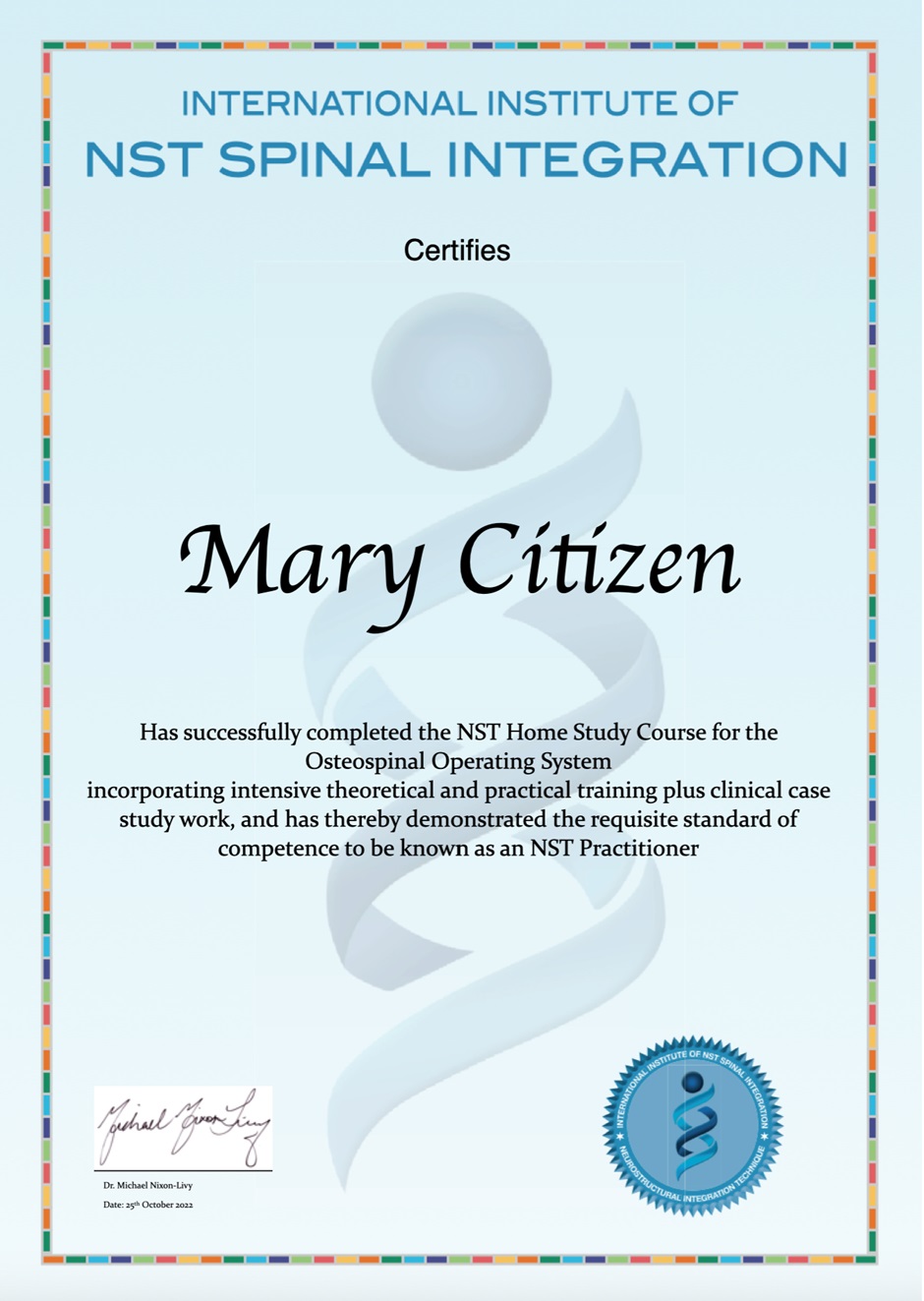
Note:
When the student has successfully completed the OS Advanced – Home Study Course they will be placed on the NST website recommended Practitioner List with an AP rating = Advanced Practitioner. The list has open access to the public.
When the student has successfully completed the Proto Plus – Home Study Course and the Deep Cures live seminar, they will be placed on the NST website recommended Practitioner List with a CAP rating = Certified Advanced Practitioner. The list has open access to the public.
